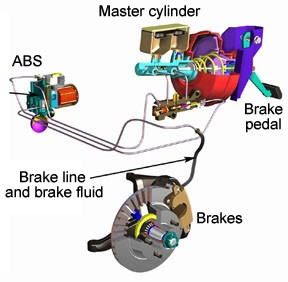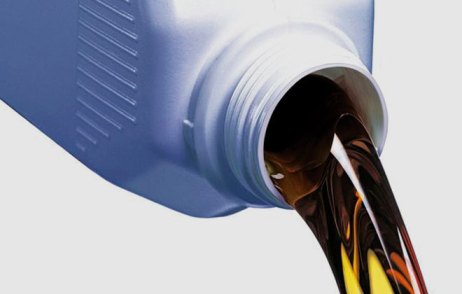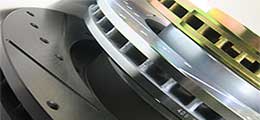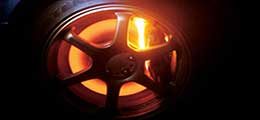 In order to understand what brake fluid flushing is and how it helps, we must first briefly mention what brake fluid is and its
In order to understand what brake fluid flushing is and how it helps, we must first briefly mention what brake fluid is and its
use. Brake fluid is a hydraulic liquid and is a medium used to transfer power to perform work. For example, brake fluid is responsible for transferring the force of stepping on your brake pedal to the calipers, where brake pads will press down on the brake disc, which stops your car.
*Photo Source: brakebleeder.com
Brake Fluid Collects Dirt and Attracts Moisture
Brake fluid is hygroscopic, which means it has the tendency to absorb dirt and moisture from the atmosphere and its environment. If your brake fluid accumulates too much dirt or moisture, then this will lead to the reduction of your brakes’ resistance to high temperatures and lower your braking performance. Furthermore, if your brakes generate too much heat, the brake fluid can boil and turn into gas. If this happens, it defeats the purpose of a hydraulic brake system because gas cannot transfer the energy needed to stop your vehicle from motion like liquid can. What’s more is that brake fluid which has collected a lot of moisture can be corrosive and rust may form and damage expensive parts of the brake system. So what is brake fluid flushing?
Changing the Old Brake Fluid with New Brake Fluid
 This is what brake fluid flushing is. In this procedure, the old fluid that has accumulated dirt and moisture will be replaced by new fluid. This will optimize its boiling point and ensure efficiency of the brakes. This also is not to be confused with “bleeding” the brakes. Bleeding the brakes only involves getting rid of enough brake fluid to get rid of air pockets in the brake system.
This is what brake fluid flushing is. In this procedure, the old fluid that has accumulated dirt and moisture will be replaced by new fluid. This will optimize its boiling point and ensure efficiency of the brakes. This also is not to be confused with “bleeding” the brakes. Bleeding the brakes only involves getting rid of enough brake fluid to get rid of air pockets in the brake system.
*Photo Source: Acuraturnersville.com
Potential Dangers of Brake Fluid
Brake fluid can be quite hazardous to your eyes or your skin. It can also do some damage to your car’s paint. So, if you are planning to do the DIY route and flush the brakes yourself, be sure to have the proper manuals and books with you, as well as the proper equipment to protect yourself.
Types of Brake Flushing Methods
There are three kinds of brake fluid flushing methods: the brake pedal method, the reverse injection method and the power flushing method. Each has their own pros and cons and you may utilize the one which will suit your preference and your budget.
How Often Should You Replace Brake Fluid?
Usually, brake fluid needs to be changed every 30,000 miles or every two to three years. However, if your brake fluid has a dark brown colour, then you might want to perform flushing as soon as possible. Some experts advise that brake fluid flushing should be undertaken every time a brake job is performed. But to stay safe and to ensure utmost efficiency, then it would be best if to inspect the brakes yourself or have professionals take a look at them regularly. There is also brake fluid for high performance applications.









